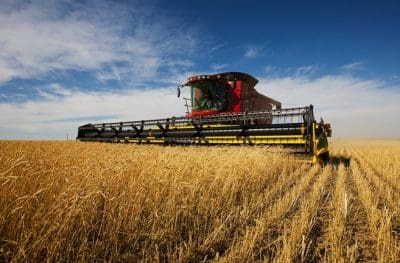WHILE the number of grain growing farms in Australia is steadily contracting, the average size of crop-producing holdings is expanding, continuing a long-term industry trend of consolidation.
 The Australian Bureau of Agricultural and Resource Economics and Sciences (ABARES) puts the number of farms growing grain as their primary, or a significant component of, agricultural output at 20,700, down by close to 2500 since 2010.
The Australian Bureau of Agricultural and Resource Economics and Sciences (ABARES) puts the number of farms growing grain as their primary, or a significant component of, agricultural output at 20,700, down by close to 2500 since 2010.
Making up that number are 9200 farms where wheat and other crops account for more than 70 per cent of production activity, and 11,500 farms classified as mixed farms producing wheat and other crops, as well as livestock.
The average size of farms focusing on growing grain has increased from 2510 hectares in 2010 to 2607ha in the five years to 2015.
In 1990, there were close to 30,000 farms growing grain and the average farm size was 1082ha.
Economies of scale
GrainGrowers general manager, David McKeon, said there had been a strong trend towards larger, but fewer grain-growing properties.
“Some of that comes from the need to continually improve productivity on a per unit output basis, which has led to larger machinery or better utilisation of labour inputs which has driven change over time,” he said.
“If you look at grain-only farmers compared to other farmers, the return they have received has been much greater. The return on assets for grain farmers has been a positive.
“We have industry consolidation. Scale works up to a point, however scale of itself is not a single driver of profitability. There needs to be a certain level of scale to be profitable, but the bigger you are doesn’t always mean the more profitable you are.
“Overall if you look at returns, the average grain farming business is performing well. Although we have fewer farmers, the farmers remaining are doing a good job.”
Grain Central: Get our free daily cropping news straight to your inbox – Click here
Determining an accurate figure of how many grain growers and grain farms there are in Australia is a near-impossible task, largely because of the challenge of definition. What constitutes a grain grower and a grain farm, where do you draw the line on production parameters and where do mixed farming operations fit into the equation?
While ABARES in its 2016 report puts the number of grain farms at 20,700, the Australian Bureau of Statistics (ABS) in 2015/16 estimated there were 22,155 grain farms with an average area planted to grains, oilseeds and pulses per farm of 1048ha.
A decade ago in 2005-06, ABS estimated there were 24,850 farms and the average area planted was 758ha, and 20 years before that in 1995-96 there were around 30,630 farms with the average area planted being 548ha.
ABARES’ estimates of farm numbers vary from the ABS census because the ABS includes all entities with an estimated annual value of operations greater than $5000. ABARES counts an establishment as a farm business if it has an estimated annual value of agricultural operations of $40,000 or more.
Covering every state of Australia, grain growers occupy almost 20 million hectares of productive land.
Family farms rule
ABARES figures highlight the value of family farm ownership in the cropping sector with large family grain farms achieving rates of return close to 5.5pc and corporate large grain farms achieving just less than 3.5pc.
Family farm ownership continues to dominate grain production with more than 95pc of grain farms being family owned and operated.
Another gauge of grain farmer numbers is the grower delivery card system provided through the National Grower Register (NGR) and Co-operative Bulk Handling (CBH).
The NGR has about 68,000 growers on its books. These are predominantly in the eastern and southern states: NSW (35pc), Victoria (25pc), SA (20pc), Queensland (11pc), WA (8pc) and Tasmania/NT (1pc).
CBH, based in Western Australia, has 4200 grower members.



HAVE YOUR SAY